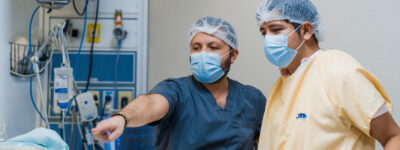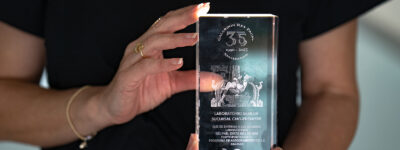Six unusual signs of dehydration you should know about
Did you know that our body temperature, skin texture and even our breath can serve as indicators of our hydration or dehydration levels?
First off, before we talk about the signs of dehydration, we should learn about what it is; here is a brief definition of dehydration: quite simply, dehydration occurs when our body cannot function correctly due to low and insufficient water levels.
Although mild dehydration can be inconvenient but tolerable, severe dehydration can cause blood clots, convulsions and other potentially fatal complications. If this is the case, it should be treated immediately. Due to its potential complications, it is important to know how to detect the early symptoms of dehydration. Some common and usual symptoms are feeling thirsty or fatigued. However, there are also other signs of dehydration that are not so obvious. Therefore, we will share with you six unusual signs of dehydration that you should know about.

Bad breath
It is well known that our saliva has antibacterial properties. However, if you are dehydrated, you won’t be able to produce enough saliva to take advantage of this natural aid. Accordingly, if your body is not able to produce sufficient amounts of saliva, you could experience a significant increase in bacterial growth in your mouth. In turn, this increase in bacteria will produce bad breath.
Dry skin
People often believe that someone who is dehydrated will experience continuous and excessive sweating. However, this is not so. In fact, as dehydration becomes more severe, a person’s skin becomes dry, red and irritated. A simple test that can help us to identify this ailment is to apply pressure in a small area of our skin and then letting go immediately. If our skin remains flat and without color, and is slow to gain back its normal appearance, then it’s time to drink abundant water and rehydrate.
Muscle cramps
If you suffer from muscle cramps when performing physical activity or being in hot weather, you could be suffering from dehydration. When you do exercise, you become agitated, your body temperature rises, and you have a higher chance of getting muscle cramps. This is due to the intense heat stroke that hits your muscles. In addition, as your muscles suffer the strain of physical activity, they experience changes. Most commonly, a change in electrolyte, sodium and potassium levels, will provoke muscle cramps.
On the other hand, you can also suffer from dehydration in cold climates if you don’t drink enough water while performing physical activity. According to several studies, dehydration symptoms in colder climates can appear slowly and feel milder, but the risks of this ailment remain the same. Therefore, as you have learned, we can experience dehydration both in hot and cold weathers.
Fever and chills
If you have severe dehydration, you are also likely to experience fever and chills. Fever, in turn, will make dehydration even worse. Thus, the higher the fever, the higher the dehydration level that you will encounter. Adults with fever should seek medical care whenever they have a body temperature higher than 104°F.
Babies and kids can also suffer from this ailment (dehydration in children) due to many causes, such as not drinking enough water, diarrhea, fever and vomit. Of these causes, fever is the most serious ailment to watch out for when kids and babies are dehydrated. In this case, we recommend visiting a pediatrician as soon as possible.
Food cravings
Dehydration can cause complications in several body organs. The liver is a body organ that is very sensitive to this ailment, as it needs water to release glycogen (a glucose based source of energy) and other chemical components. This is why, when you are dehydrated, you will experience low levels of energy and get strong food cravings (specially sugar cravings).
Remember that our body can have a false sense of feeling hungry, when in fact it is feeling thirsty. This means that sometimes you will feel hungry, when all you really need is to drink abundant water.
Headache
Did you know that even mild dehydration can cause a severe headache and even a migraine? Because it’s hard to know what is the actual cause of a headache, drinking a glass of water and maintaining optimal hydration levels every day is a simple and safe way to prevent or alleviate a headache.
Frequently Asked Questions about Dehydration
Recovering from dehydration really depends on the cause and on how long you’ve been dehydrated. If your symptoms are severe that it requires medical attention and hospitalization, the recovery time may take a day or two. However, once the emergency has passed, you will need to follow a treatment that will probably last for a few weeks.
When you’re dehydrated, you may experience dark colored urine, muscle fatigue, dizziness, and extreme thirst. Nonetheless, severe or chronic dehydration presents a bit differently because the body becomes less sensitive to water intake and tries doing regular activities with less water inside. Some signs of severe dehydration include:
- dry skin
- constipation
- fatigue
- muscle weakness
- headaches
Yes, when left untreated, chronic dehydration has been linked to other health conditions like high blood pressure and kidney stones. Research has shown that when your dehydration is severe or prolonged, you may have an underlying illness. As well, dehydration has been linked to urinary tract infections, intestinal failure, and dementia.
Either severe, chronic, or mild, dehydration is a serious condition that should never be ignored. Symptoms such as nausea, headaches, dizziness, and muscle cramping are some signs that you need to drink more water. However, if you experience any of the unusual sings that we mention before call your doctor or approach to the emergency room.




